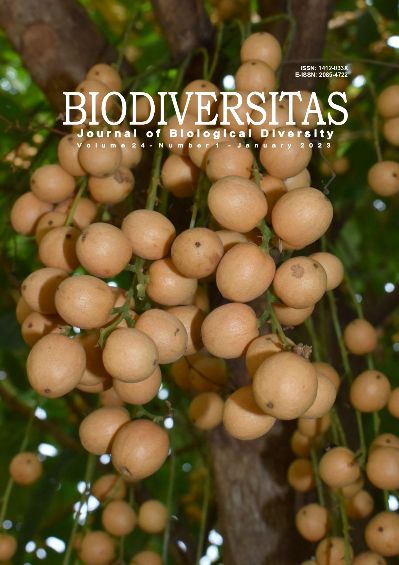Morphological description and life history of the Philippine endemic Limnonectes leytensis Leyte swamp frog in Rogongon, Iligan City, Philippines
##plugins.themes.bootstrap3.article.main##
Abstract
Abstract. Flores ABA, Diesmos AC, Nu?eza OM. 2022. Morphological description and life history of the Philippine endemic Limnonectes leytensis Leyte swamp frog in Rogongon, Iligan City, Philippines. Biodiversitas 23: 133-139. The Philippine endemic Limnonectes leytensis (Leyte Swamp Frog) is a widespread species, however, most studies concerning it only focus on adult stages, except for the study on Negros Island. With this, we conducted a study on the morphology and life history of L. leytensis in Rogongon, Iligan City, Philippines. We collected different tadpole stages through opportunistic sampling. Gosner developmental stages 23 to 40 were considered and measured using standard tadpole body morphometrics. Linear regression was used for modeling the relationship between the different morphometrics. Results showed that the tadpoles have a depressed body, dorsolateral eye position and has golden, light to dark brown pigmentation. Apart from this, its mouthpart showed an anteroventral shape, and the labial tooth row formula is 1/2-3, showing a single row in the upper lip and three rows in the lower lip, having the 3rd row half the length of the other two, which is different to that of the results of the past studies which reported that the labial tooth was 1/2:1-1 showing a broken gap in the first tooth row of the lower lip. The analysis revealed a positive relationship between different morphometrics to the total length (body length rs: 0.96; tail length rs: 0.99; musculature height rs: 0.90 and maximum tail height rs: 0.85) with a significance value of <0.001. The data generated from this study will ignite future efforts on tadpole research in the country, given that there are differences found in the tadpoles from different regions.

